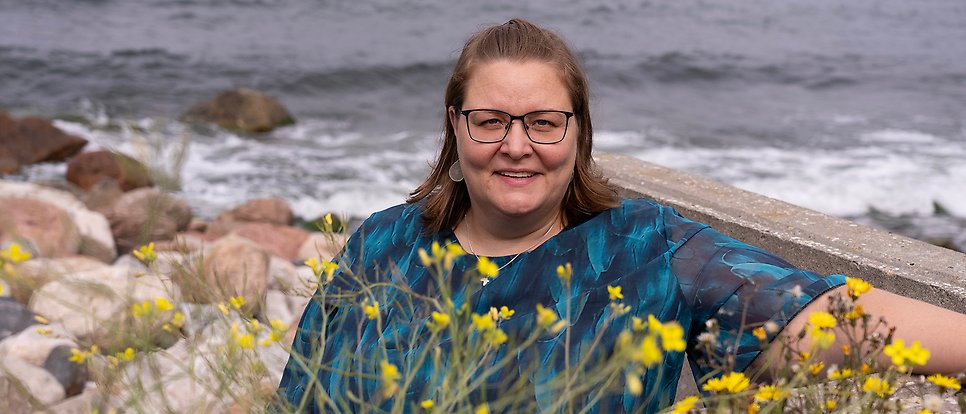A tool to increase the utility of ocean observations

Lina Mtwana Nordlund is coordinating the project BioEcoOcean from Uppsala University. Photo: Daniel Olsson
Life in the ocean is the focus for the major new EU project BioEcoOcean. One main task will be developing a working method for supporting the development and coordination of ocean observations and measurements to make them comparable from one country, research group and management agency to the next. The project will last four years and has a budget of SEK 67.5 million.
“Today, marine organisms are observed and monitored in various ways around the world. Nor is there any well-developed overall strategy for doing so,” says Lina Mtwana Nordlund, who is coordinating the project from Uppsala University.
The lack of standardised methods makes it difficult to unequivocally answer questions about how organisms and ecosystems are responding to, for example, climate change.
“I work a great deal with seagrass. But what should I be measuring? Someone might measure coverage – i.e., how large an area the plants cover – another how many plants there are and a third something else entirely. Globally standardised and coordinated measurements will allow us to compare our measurements with one another wherever one is on Earth, as one does with temperature for example,” explains Nordlund.
Development of a tool
The main task of the project, which is part of the European Commission’s key funding programme for research and innovation, Horizon Europe, will be to build a system that facilitates equivalent and more useful marine observations. Work will begin in earnest in early 2024.
“We will be developing a tool to facilitate cooperation between planners, researchers, managers, data analysts and policymakers, among others. Development will take place in a co-creative process involving many different stakeholders. It is intended to support everyone involved with ocean observations in communicating with one another and thinking bigger,” says Nordlund.
It is particularly important to standardise measurements of what are known as essential ocean variables, i.e., things that are measurable and considered particularly important to understanding populations and ecosystems. This may, for example, be a matter of the distribution or quantity of fish and submerged aquatic vegetation. Understanding natural variations and what causes them is necessary if we are to create better models of future scenarios.
Studies of living organisms
Aside from developing the tool, the project will also encompass a number of studies of living organisms at several locations around Europe. The aim is to work on many different types of ocean observations while simultaneously testing, adapting and developing the tool together with stakeholders.
“I have what is known as a living lab on Gotland where I work with seagrass, fish and invertebrates. Among other things, we will see whether measurements can be taken more effectively. Aside from what we’re already measuring, what else can we measure in order to understand both positive and negative changes?” ponders Nordlund, for whom the organisation of marine environment observations on a global scale is nothing new. Since last year, she has been a member of the expert panel on biology and ecosystems for the Global Ocean Observing System, a programme led by the UNESCO Intergovernmental Oceanographic Commission (IOC).
Åsa Malmberg
